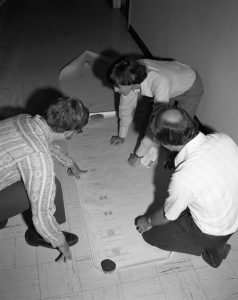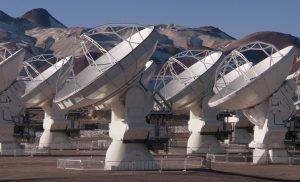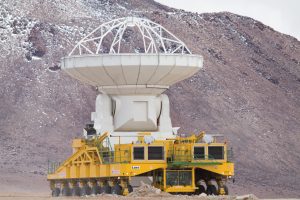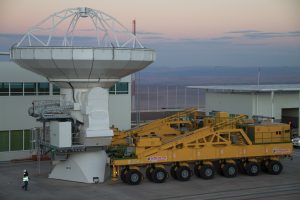Computer operators Sandy Braun (standing) and IBM employee Mary Jennings in the Charlottesville computer room in 1967. Every day, staff drove here with tapes of telescope data from Green Bank. Handwritten processing programs were transferred to cards using a keypunch. Sandy is feeding the punch cards into the computer. It would return hundreds of pages of data that were checked by eye then sent back to Green Bank. Mary is at the main terminal with a teletype keyboard with printer output — no video terminals in 1967! The computer is an IBM 360 series, and the operating system was known as OS/360; programs were probably written in PL/1 or Fortran.


Computers Come to Green Bank
An impressive sight in the 1960s, a circuit board gets its moment in the spotlight.

Filesharing, the Early Days
Pat Crane, Barry Geldzahler, and Dave Shaffer examine their data in a Green Bank hallway, September 1977.

ALMA Begins Science Operations
In September 2011, ALMA officially began science operations, which meant scientists from around the world could request time to use the array and examine the universe for their proposed research. In this photo, the multinational antennas of the array move as one.

North American ALMA Antenna heads to the high site
The first North American ALMA antenna rides up to the 16,500-foot elevation high site in northern Chile on the back of a transporter. This 12-meter antenna will join the first antenna, a 12-meter Japanese antenna that was placed prior to this climb.

ALMA transporter prepares to lift antenna
At the ALMA Operations Support Facility in northern Chile, a North American ALMA antenna is readied for a ride on the Transporter up to the array site on the Chajnantor Plain, 40 km into the Chilean Andes. The custom-made lifter has 28 wheels for a jostle-free ride.





